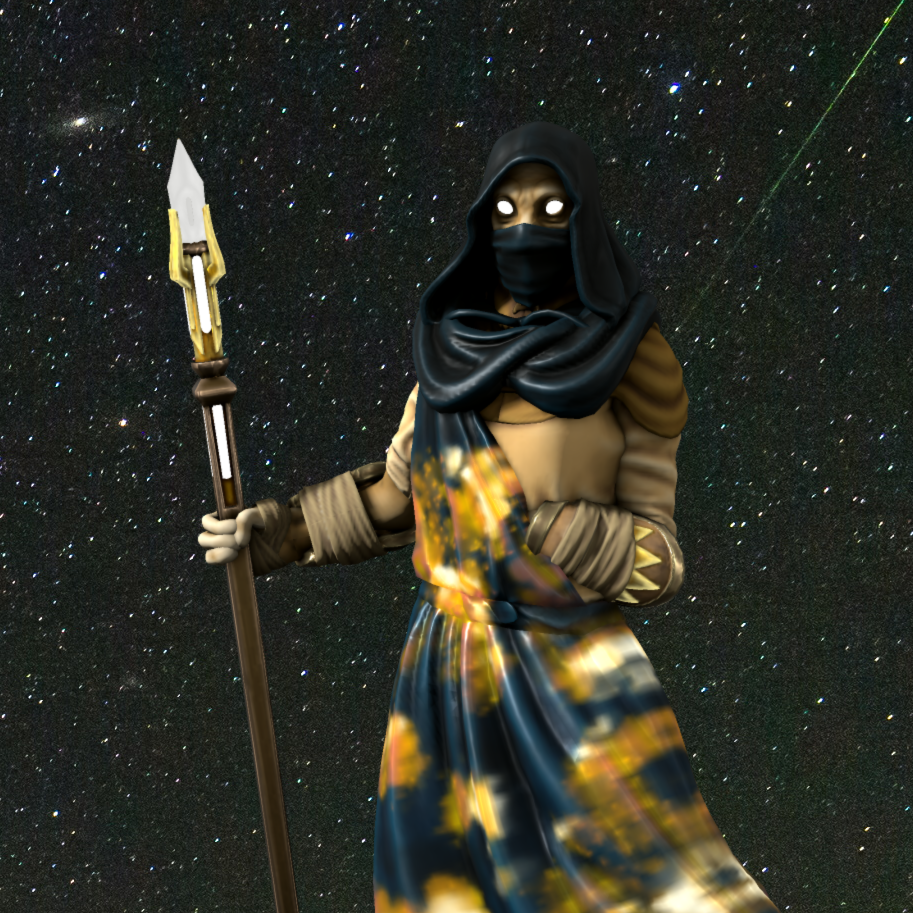by Hashamid in-Arabal, Doctor of Philology at the Andaen University of Esoteric Arts and Lore
Mysteries of Purpose and Origin
Out of all the documents housed in the impressive archives of the Esoteric University, the Codex of Durul Hvuliim Al-Hsatar, popularly known as the Codex of Contradictions, is second to none in its ability to confound and frustrate those scholars who have been so audacious as to attempt to interpret it. The obstacles facing such scholars are numerous. That the text is written in the fiendishly convoluted script of the Shadrusun, composed of likely more than ten thousand individual logographic characters, is only the beginning of its analysts’ many woes.
One would expect, perhaps, that the translation of such a codex would at least be helped by the charts and other visual aids contained within the text itself. Alas, it is quite the opposite: The visuals, for all their intricacy, are decontextualized at best and wholly nonsensical at worst. To illustrate the point, here I take the liberty of anonymously quoting an advanced mentee of mine who has supported my research:
“Master, I’m as much of an enthusiast for good fiction as anyone else. Fictional worlds, even. But who in the ashes of burning Andaen would design an entire star chart for a fictional world? How would even one of those dusty Shadrusun find the time?!”
A key portion of the Codex indeed appears to be a star chart of sorts, but while it matches if not exceeds the works of present-day astronomers in its level of detail, the constellations and formations depicted within do not appear to correspond with those over the skies over our world whatsoever. Currently, the notion that the chart represents the setting of a work of fiction is the most widely accepted working theory. Yet such a theory has troubling implications, both for interpreting the rest of the Codex’s contents and for the careers exhausted on its analysis. The aforementioned student presents a fair point: One would imagine that the long-lived Shadrusun, even at the height of their power, had plenty else with which to occupy their time. And why should scholars expend such an enormous effort across entire academic fields on the interpretation of a particularly convoluted work of world-building, should that truly be the purpose of this document?
Stranger still, if the Codex is purely a work of fiction, is its one-of-a-kind craftsmanship. The Shadrusun are well known for having carved entire libraries of work into clay tablets and chiseled stone in painstaking detail. The Codex is quite another matter, however: Its contents, down to every star in its star chart, are etched into a dozen tablets of metal, a resilient alloy of unknown formulation, by means that have yet to be replicated by any artisan. All things considered, I am not certain that the tablets even require the protection of an archive at all.
The unique materials and design of the Codex, which I imagine were enormously costly for its author, also bode poorly for the prevailing theory that the Codex is a hobbyist’s work of fiction.
If only it were the case that one could present these questions to the author of the Codex. Alas, the reader would do well to remember that the incredible longevity of the Shadrusun has hardly protected them or their works from the ravages of conflict and calamity. Though their largely underground citadel of Hwar-Chtuurul-Sharimun survived the internecine conflict of the Crusade and the Resistance, I would conservatively estimate that more than ninety percent of the Shadrusun themselves were killed off in that war. Nor is it the case that all the veterans of that conflict have continued to live to this day. Further, the borders of
Hwar-al-Ashad were once quite a bit more expansive than they are now; no doubt with the conquest of each of their holds came the destruction of numerous Shadrusun writings. Not that we scholars even know, with certainty, the Codex’s place of origin! Though written in the Shadrusun script, legend has it that the codex was found by bored camel-herders in a cavern half a world away from Hwar-al-Ashad, off in a particularly desolate valley in
Takhet Alay. That the valley is given a name at all in Shadrusun writings—
Durul Hvuliim Al-Hsatar—is bewildering, as is the sorrowful-sounding yet ambiguous placename itself. Though I have no doubt the former cradle of civilization is home to a number of archaeological mysteries, there is no reason to think that the territorial holdings of the Shadrusun ever extended all those thousands of miles to the Takheti homelands. Why a Shadrusun author would choose to deposit the text in that remote valley, or why any other procurer would be motivated to transport the heavy tablets all that way, seems a matter beyond the power of mere scholars to explain.
I would be guilty of a gross understatement in stating that opportunities to consult with the Shadrusun themselves are rare. Those few Shadrusun who have taken part in the study of the Codex have been taciturn when asked to share their insights. Taciturn at best. I will not dwell on the matter here.
If either the Codex’s author or its cousins-in-text were ever attested in the historical record, that key component of the record is either irreversibly lost or is well defended from the gaze of human eyes. If somehow the Codex’s author still walks this world, they have not and might never choose to take credit for this feat of ancient literature.
I now call attention to the sigil inscribed at the beginning of this manuscript. Far simpler than a star chart though it may be, this sigil—often referred to as the Confounding Sign by more sensationalistic writers—appears as a header on the first tablet of the Codex. Could it be the mark or sign of the text’s author? Alas, the sigil’s meaning has so far eluded all serious attempts at decipherment. If it is the mark of a place, nation, or noble house, then whoever or whatever represented itself with this sigil is wholly lost to the ravages of time. If it a decontextualized mystical or religious symbol, then the tradition to which it belonged, too, must have died out with the last of its believers. If the sigil is merely the author’s abstract signature or calling card, then the author, frankly, made an obnoxious decision in scrawling this sigil onto the most prominent space of the text. There is even one hypothesis—mind you, that of a thoroughly discredited scholar, a drop-out of this very University—claiming that the thing is an uncanny sort of spellcraft circle.
Any reader who is familiar with the art of spellcraft is invited to pause for a brief laugh over this risible claim before returning to this treatise. For the uninitiated reader, the entire purpose of a spell circle is to bind and limit the flows of a spell’s magical forces. Thus, marks exceeding the circle’s bounds would render the spell’s effects unpredictable to the point of uselessness or mortal danger. Further, not one spell exists which contains so few marks within the bounds of its circle.
With even the matter of the Codex’s initial sigil remaining unsettled, I might as well discuss what knowledge of the Codex’s contents has more or less been established through scholarship.
The Known Contents of the Codex
The use of the word “known” here is quite liberal, I admit, yet productive scholarly work has deciphered at least some of the Codex’s contents. More or less.
Getting Oriented
Immediately following the aforementioned star chart, which is accompanied by what one assumes are the names of several celestial bodies, is some manner of calendar date etched in large numerals. The calendar in question, naturally, is not one known to be in use anywhere across Tahuum Itaqiin.
The above sequence of the numbers is highly suggestive of a calendar, at least, though given the contents of this and the rest of the tablets, it is debated whether this date was supposed to refer to the Codex’s time of writing, to a date long in the author’s past, or even to a meaningful point in the author’s future. Should it be the last of these options, I would be quite curious to find a mathematician who could determine whether this date recorded by the Codex’s author has already passed.
Beneath this calendar date is yet another abstraction, a series of mathematical figures which most likely constitute different geographic coordinates, accompanied by yet-deciphered names or labels in Shadrusun characters. This itself is a surprising finding, considering the coordinates—reproduced below—exceed 180 degrees in both directions.
top row: 123.23.54
bottom: 114.19.10
Some interpreters, mainly mathematicians, here accuse the Codex’s author of simple innumeracy. If, however, we assume that the author was well educated and not fundamentally challenged with geometry, a slightly more charitable explanation is that the author developed their own coordinate system without consideration for cardinal directions, in which we likely will never know with certainty what locations the author intended to indicate with these figures.
Does a fictional world require cardinal directions?
It does seem that this section is written to orient the reader to the setting of the extensive piece of prose that follows. How exactly this information is meant to help orient the reader is beyond the understanding of mere scholars.
A narrative, of sorts, begins
The passage of prose begins as follows:
Maashatir wandered the empty endlessness, the vast expanse [a desert, perhaps?], Their body shorn by raging winds. The wind shredded Their flesh as They strode. From afar, Huchaatir, Nishatir, Haaratir, Yinutir, Yishitir, Qanatir, Munutir, Nimaatir, Tashitir, Hashatir, Vaaratir, Tsuvatir... [four dozen other names, omitted in this translation] and innumerable others, the aged kith and kin of Maashatir, all beheld Maashatir’s trial from afar. They watched with interest, but move to act they did not, remaining perched, aloof, in their high places. Yet Maashatir suffered these ravages and wandered still.
From Maashatir’s bones, Their flesh continued to shear off. Their hair flew from Their head, and blood from Their scalp, and tears from Their eyes, all into the raging wind, forming great, circling clouds. Whether for days or for eons, it is not for one to say how long the trial of Maashatir persisted. Neither is it for one to comprehend over what expanse of space Maashatir wandered. Yet Maashatir suffered these ravages and wandered still.
From the remains shorn from Maashatir assemblies gathered, some great and some small, though all paled in comparison to Maashatir, even as less and less remained of Them. Under Maashatir [or Mashatir’s bright shadow?], all the assembled were revealed, and all the assembled saw the way, and many of the assembled followed Maashatir, save for a few who wandered on their own paths. For Maashatir’s kith and kin remained aloof, and there was no other to follow.
Though the function of this prose passage eluded the understanding of the earliest scholars to analyze it, it was one reader with an eye for details bordering on the obsessive, known to us today only as Rajaan, who saw that the sixty names above corresponded with sixty of the most prominent figures labeled in the aforementioned star chart. The most reasonable conclusion from Rajaan’s insight, embraced by most scholars today, is that the above passage is the opening for some manner of creation story—though this itself is a curious finding, as the sorcerous Shadrusun are not known to have ever sworn to any creed or faith, nor have they been known to venerate anything beyond their own works. This early discovery was the launching point for Rajaan’s legacy, from whose writings a long line of scholars have persisted in their earnest attempts to interpret the text of the Codex.
The most ambitious scholars among us have even sought to parse out the text’s intended meaning.
A narrative, of sorts, devolves into a philosophical treatise
Unfortunately, the opening passage, which I have provided above, represents the upper limit of the decipherability and interpretability of this text. The passages that follow, so far as they have been reliably translated at all, blur the lines between creation myth, parable, and philosophical treatise, perhaps an existentialist one or perhaps one in which the author simply despairs over the fact of their existence. The assembled hosts continue to follow Maashatir, though the narrator remarks that Maashatir leads them not to shelter, but merely continues to wander, and the hosts continue to follow Maashatir’s lead. Why they are content to do this, or whether they have a choice in the matter, remains a complete mystery at the time of this writing.
Then, the narrative is interrupted with a series of strings of numbers and symbols. Mathematicians studying the Codex have debated for some time whether these constitute equations of unusual refinement or an eccentric author's mere gibberish.
From there, the narrator turns their attention to the followers themselves, characterizing them as having mostly simple existences before focusing on the inner experiences of one follower in particular. This one follower’s name is written with such complex characters that it has yet to be deciphered—unfortunate, seeing as this one follower seems to be centered in the much of the parable or philosophical tract that follows.
From here, a lengthy treatise details complex relationships and interactions among the followers, though it is not known to what extent these descriptions are descriptive versus allegorical. Later, the followers seem to be embroiled in a lasting conflict, for the tone of the piece begins to grow distressing as several different followers are gruesomely torn apart, or banished from the others to “black and sightless lands.” Maashatir apparently persists in their course, and the followers persist in following, even as the body and mind of Maashatir both begin to age. Apparently, Maashatir’s condition degrades to the point that They begin to strike out at the followers with increasing frequency and violence, the drama eventually culminating into Maashatir consuming one of the followers—an unsettling development if one remembers that the followers are apparently formed from Maashatir’s own body. Apparently, the sixty kith and kin mentioned in the beginning of the passage remain unsympathetic or less wholly powerless to address this devolving situation.
The narration grows mournful in tone, though primarily the narrator mourns Maashatir and not the slain or exiled followers. The narrator eventually tells of a need for escape from this dire path, but this statement is addressed to no one in particular and does mention any of the characters from the parable.
The narrative comes apart in the hands of an apparently distraught author
Towards the end of the text, the author begins pontificating on the nature of existence, wondering whether it is truly cyclical as they believe or cycles themselves inevitably come to an end. The author then lists off more than a dozen examples of nature’s cycles of the births and deaths of creatures, of the founding and collapse of societies, of the rising and weathering of mountains, the astronomical cycles of the transits of celestial bodies, and so on. At least, this is the only apparent relation among the contents of this portion. There is no apparent narrative element in this section.
Do endings always lead to new beginnings, or must the beginnings someday cease? The author seems to be pessimistic regarding this matter, despairing in the belief that the cycles of life and the universe, far from representing stability, are the very embodiment of fragility. It takes little, the author laments, for a cycle to be derailed, after which it begins to break down, whether slowly or rapidly, descending into entropic nothingness.
What ailed the author of this text, such that they wrote such an extensive parable or work of pure fiction wracked with such palpable angst, remains and will likely remain unknown to historians, philosophers, linguists, and mathematicians alike. If nothing else, this Codex of Contradictions has a fitting home deep in the archives of the Esoteric University.











I love this... especially since I recently started working on a star chart for a fictional world! Fantastic work with lots of little nuggets of fun twisted into it.
Thank you, Deleyna! I quite enjoy finding facets of worldbuiding that I hadn't previously given consideration to.